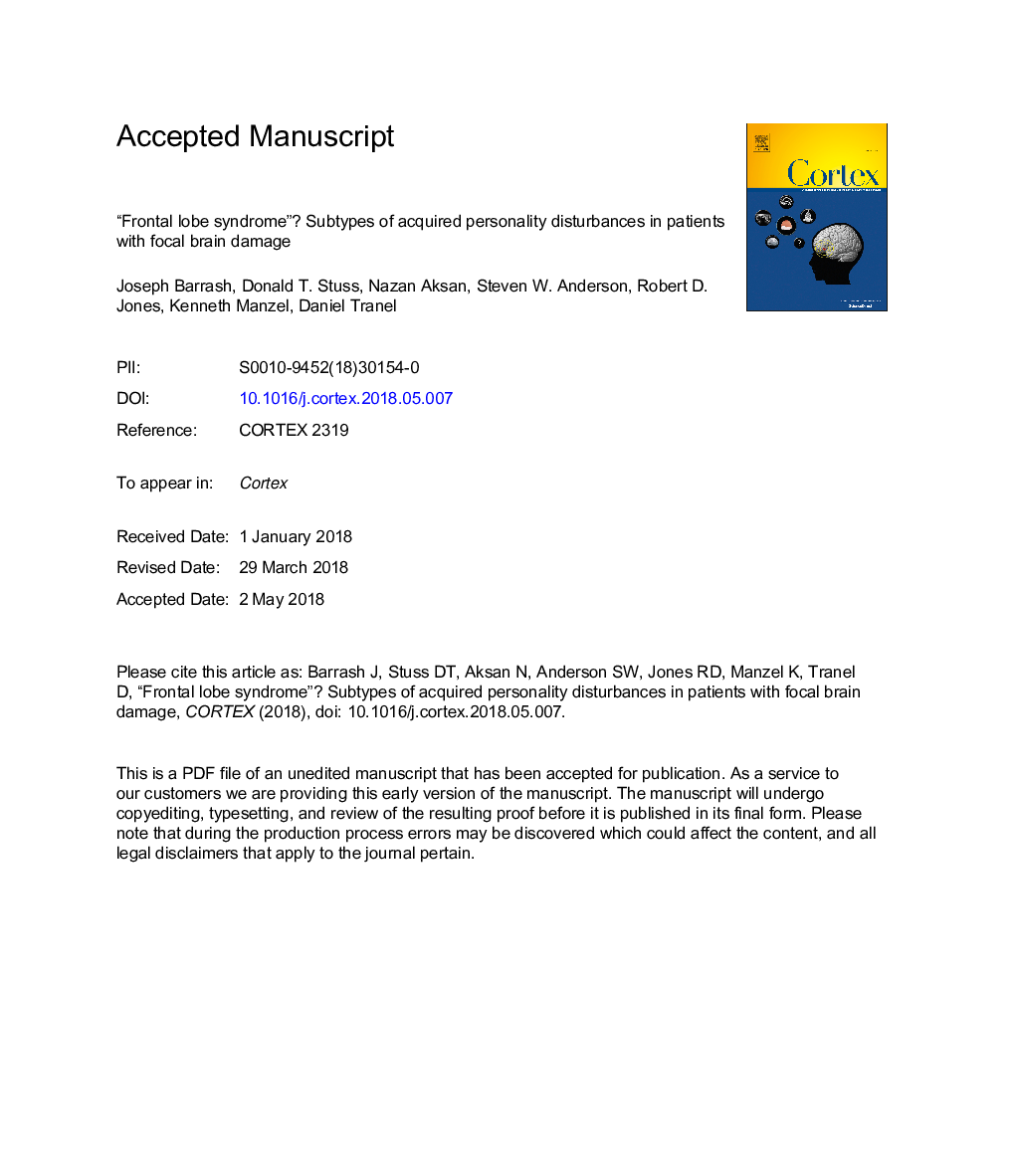| Article ID | Journal | Published Year | Pages | File Type |
|---|---|---|---|---|
| 7311258 | Cortex | 2018 | 45 Pages |
Abstract
Conceptualizations of the nature of acquired personality disturbances after brain damage, especially to prefrontal cortex, have progressed from clinical observations of a large, disparate set of disturbances to theories concerning neuroanatomically-based subgroups with prefrontal damage. However, hypothesized subtypes have not yet been studied systematically. Based on our previous investigations of acquired personality disturbances, we hypothesized five subtypes of acquired personality disturbances: Executive Disturbances, Disturbed Social Behavior, Emotional Dysregulation, Hypo-emotionality/De-Energization, and Distress, as well as an undisturbed group. Subtypes were investigated in 194 adults with chronic, stable, focal lesions located in various aspects of prefrontal lobes and elsewhere in the brain, using two different cluster analysis techniques applied to ratings on the Iowa Scales of Personality Change. One technique was a hypothesis-driven approach; the other was a set of strictly empirical analyses to assess the robustness of clusters found in the first analysis. The hypothesis-driven analysis largely supported the hypothesized set of subtypes. However, in contrast to the hypothesis, it suggested that disturbed social behavior and emotional dysregulation are not two distinct subtypes, but two aspects of one multifaceted type of disturbance. Additionally, the so-labeled “executive disturbances” group also showed disturbances in other domains. Results from the second (empirical) set of cluster analyses were consistent with findings from the hypothesis-driven cluster analysis. Overall, findings across the two cluster analyses indicated four subtypes of acquired personality disturbances: (1) executive disturbances in association with generalized disturbance, (2) dysregulation of emotions and behavior, (3) hypo-emotionality and de-energization, and (4) distress/anxiety. These findings show strong correspondence with subtypes suggested by prominent models of prefrontal systems based on neuroanatomically-defined circuits. Clarification of distinctive subtypes of acquired personality disturbances is a step toward enhancing our ability to tailor rehabilitative interventions for patients with prefrontal brain injuries.
Related Topics
Life Sciences
Neuroscience
Behavioral Neuroscience
Authors
Joseph Barrash, Donald T. Stuss, Nazan Aksan, Steven W. Anderson, Robert D. Jones, Kenneth Manzel, Daniel Tranel,
